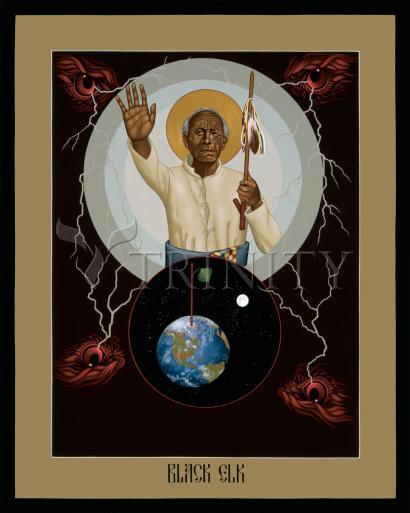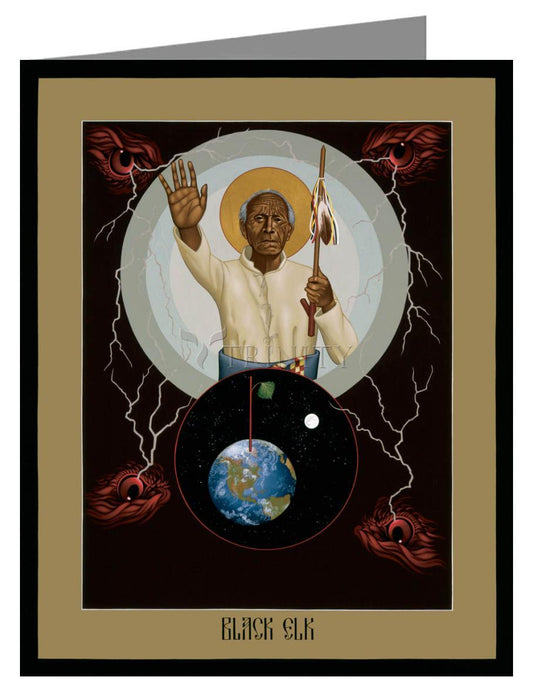"My friend, I am going to tell you the story of my life, as you wish; and if it were only the story of my life I think I would not tell it; for what is one man that he should make much of his winters, even when they bend him like a heavy snow? So many other men have lived and shall live that story, to be grass upon the hills."
"Black Elk
Black Elk was born into a tribe of the Plains Indians, the Oglala Sioux. He had five sisters and one brother. He had many children, but the one discussed in this essay is his daughter, Lucy Looks Twice. The Sioux were hunters, and they relied mainly on the buffalo. Buffalo was their main source for food as well as shelter and clothing. The Sioux lived throughout the Midwestern plains of North America, until they were put on Pine Ridge reservation in South Dakota.
At the age of nine, Black Elk received a great vision. This vision portrayed the Powers of the World, each giving Black Elk a gift and a special power. The Grandfathers, represented the powers of north, south, east, and west. With the gifts that he received, Black Elk was given the center of the nations hoop. According to the book, Black Elk Speaks, by John Neihardt, the grandfathers said to Black Elk, "Behold a nation; it is yours." And a voice said, "Behold, they have given you the center of the nation's hoop to make it live."
Black Elk took part in many historical events, like the Battle of Little Big Horn. As an adult Black Elk became a medicine man and a prominent member of his tribe. Thirty years before his death, Black Elk became a Catholic. His religion was very important to him. In the book, Black Elk; Holy Man of the Oglala by Michael Steltenkamp, Lucy Looks Twice recalls that her father had "suffered a lot," and had experienced inner confusion. Black Elk knew that something was wrong in his life because he suffered socially, physically, and psychologically. Black Elk soon had to visit the hospital due to ulcers. While there he received the holy sacrament, and never suffered from his ulcers again. This instance, and with the encouragement of his friend, Kills Brave, Black Elk converted to Catholicism. On December 6th, 1904 Black Elk was baptized, and he gave up his medicine forever. Because he was baptized on the feast of St. Nicholas, Black Elk was given the Christian name, Nicholas Black Elk.
These last years of Black Elk's life are very important, because he was a devout Catholic. Knowing about Christ and receiving communion were what he held sacred. Black Elk spent many years of his life as a catechist. He often walked for miles to summon a priest to administer last rights. Lucy states that, "If anything ever went wrong with my children, if he prayed, I knew everything would be all right. He had a way, since he loved little children." Black Elk's religion was so strong that it had a drastic impact on many lives. Many of the people Black Elk used to care for as a medicine man came to him for advice, and many followed in his direction.
Chronology of Black Elk's Life
1863 (December) Born on the Little Powder River
1873 Had the Great Vision
1876 Battle at the Little Bighorn River
1882 Became a Medicine Man
1886-1889 Traveled to Europe
1890 Massacre at Wounded Knee
1931 Told Life Story to John Neihardt
1950 Died on Pine Ridge Reservation, South Dakota
"Excerpts from Famous Native American Indians Tribute Page




















